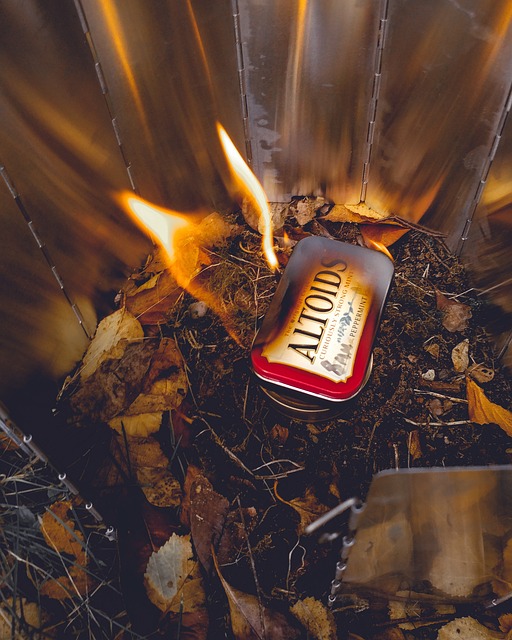Char cloth, also known as charred cloth or charred cotton, is a valuable survival tool for outdoor enthusiasts, campers, and preppers. It’s incredibly useful for starting fires in various conditions, from the damp wilderness to emergency situations. Making char cloth is a straightforward process that can be accomplished with minimal materials and equipment. In this guide, we’ll walk you through the step-by-step process of making char cloth and explore its numerous applications.
What is Char Cloth?
Char cloth is a lightweight material made from natural fibers, typically cotton or linen, that has been charred through a controlled combustion process. The result is a highly flammable substance that easily catches fire when exposed to sparks, a flame, or even sunlight. Char cloth is renowned for its ability to ignite with the slightest heat, making it an excellent fire-starting material, especially in challenging conditions.
Why Make Char Cloth?
Before we dive into the process of making char cloth, it’s important to understand why it’s a valuable addition to your outdoor survival kit or camping gear. Here are some compelling reasons to make char cloth:
- Reliable Fire Starter: Char cloth can ignite with minimal heat, making it an ideal fire starter. Whether you’re facing wet conditions, a lack of suitable tinder, or need to start a fire in an emergency, char cloth can be a lifesaver.
- Portability: Char cloth is lightweight and compact, making it easy to carry in your backpack or survival kit. You can store it in a small container or even a zip-lock bag.
- Long Shelf Life: Properly stored char cloth can last for a long time. This means you can prepare it in advance and have it ready whenever you need to start a fire.
- Versatile: Char cloth can be used in conjunction with various fire-starting methods, including flint and steel, a ferrocerium rod, or even a magnifying glass. It provides versatility in your fire-making techniques.
- Learn Valuable Skills: Making char cloth is an essential wilderness skill that allows you to understand the principles of combustion and fire-making. It’s a valuable skill for anyone spending time outdoors.
Now that you understand the importance of char cloth, let’s explore how to make it.
Materials Needed
Before you start making char cloth, gather the following materials and equipment:
- Cotton Fabric: The primary material for making char cloth is cotton fabric. Old cotton t-shirts, jeans, or any cotton-based material will work. Make sure to cut it into small squares or strips for ease of use.
- A Metal Container: You’ll need a metal container with a tight-fitting lid. An Altoids tin, an empty soup can, or any small metal container will do. Ensure that the container is clean and free of any residual odors or substances.
- A Small Hole Punch: You’ll use this to make a small hole in your metal container. The hole should be just large enough to pass a string or wire through.
- String or Wire: This will be used to suspend the cotton fabric inside the container during the charring process. Make sure it’s non-flammable and sturdy enough to hold the fabric.
- Fire-Starting Tools: Depending on your preferred method, you may need fire-starting tools such as a flint and steel set, a ferrocerium rod, or a magnifying glass. Choose the method that you are most comfortable with.
- Fire-Proof Surface: Find a safe, non-flammable surface to conduct the charring process. A flat rock or a metal surface works well.
Now that you have everything you need, let’s dive into the step-by-step process of making char cloth.
Step 1: Preparing the Cotton Fabric
- Cut the Fabric: Start by cutting the cotton fabric into small squares or strips. These should be small enough to fit inside your metal container without touching the sides. Pieces that are approximately 2 inches by 2 inches work well.
- Clean and Dry: Ensure that the fabric is clean and free from any contaminants. Any dirt or impurities on the fabric can affect the quality of the char cloth. If the fabric is dirty, you can wash and dry it before proceeding.
Step 2: Preparing the Metal Container
- Make a Hole: Using the small hole punch, create a small hole in the lid of your metal container. This hole is essential for allowing gases to escape during the charring process. Make sure the hole is not too large, as you don’t want to compromise the airtight seal of the container.
- Insert the String or Wire: Cut a piece of string or wire long enough to reach the bottom of the container and still have some length outside. Thread one end through the hole in the container’s lid and tie a knot on the inside. The other end of the string or wire should remain outside the container.
Step 3: Loading the Container
- Place the Fabric Inside: Carefully place the prepared cotton fabric squares or strips inside the metal container. Ensure that they are arranged in a single layer and not stacked on top of each other.
- Seal the Container: Close the metal container’s lid tightly. Make sure it’s sealed as airtight as possible to prevent oxygen from entering during the charring process.
Step 4: Charring the Cloth
- Choose a Heat Source: Decide on the heat source you’ll use to char the cloth. Common methods include placing the container on hot coals from a campfire, using a portable stove, or even employing an open flame. The key is to provide consistent heat.
- Start the Heat Source: Begin heating the container with your chosen heat source. It’s essential to monitor the process closely. You’ll know the charring process is complete when you see smoke escaping from the hole in the container’s lid.
- Wait for Smoke: As the container heats up, it will release smoke through the hole in the lid. This is a sign that the cotton fabric inside is charring. Keep the heat source going until the smoke stops escaping, which indicates that the charring process is complete.
- Cooling Down: Once the smoke has ceased, carefully remove the container from the heat source using gloves or tongs. Be cautious, as the container and its contents will be extremely hot.
Step 5: Inspecting and Storing the Char Cloth
- Inspect the Char Cloth: Allow the metal container to cool down completely before opening it. Inside, you should find your char cloth, which should be black and brittle. It should easily crumble into small pieces when touched.
- Store Properly: Store your char cloth in a dry and airtight container to prevent moisture from affecting its flammability. A small tin, an airtight bag, or a waterproof container works well for this purpose.
Step 6: Testing Your Char Cloth
- Testing for Ignition: To ensure that your char cloth is effective, it’s a good idea to test it with your chosen fire-starting method. You can use a flint and steel set, a ferrocerium rod, or a magnifying glass to create sparks or heat. Place a small piece of char cloth near the source of ignition and observe how easily it catches fire.
- Practice: Practice using your char cloth with different fire-starting tools until you are comfortable and confident in your ability to start a fire with it.
Additional Tips and Considerations
- Safety First: Always exercise caution when using open flames and fire-starting tools. Keep a safe distance from the heat source and have a fire extinguisher or water source nearby in case of emergencies.
- Experiment: Don’t be afraid to experiment with different types of cotton fabric and charring methods. You may find that certain fabrics or techniques work better for your specific needs.
- Keep it Dry: Moisture is the enemy of char cloth. Ensure that your char cloth remains dry at all times to maintain its flammability.
- Quantity: It’s a good practice to prepare multiple pieces of char cloth and store them in various locations, such as your backpack, survival kit, and camping gear. Having char cloth readily available can be a lifesaver in unexpected situations.
Conclusion
Learning how to make char cloth is a valuable skill for outdoor enthusiasts, campers, and anyone interested in survival techniques. This lightweight and highly flammable material can mean the difference between a successful fire and a cold night in the wilderness. By following the steps outlined in this guide and practicing with different fire-starting methods, you’ll become proficient in using char cloth to start fires in a variety of conditions.
Remember that safety should always be your top priority when handling fire and fire-starting tools. With the knowledge and experience gained from making and using char cloth, you’ll be better prepared for outdoor adventures and emergency situations where fire is a necessity for survival. So, gather your materials, follow the steps, and start making your own char cloth today.





